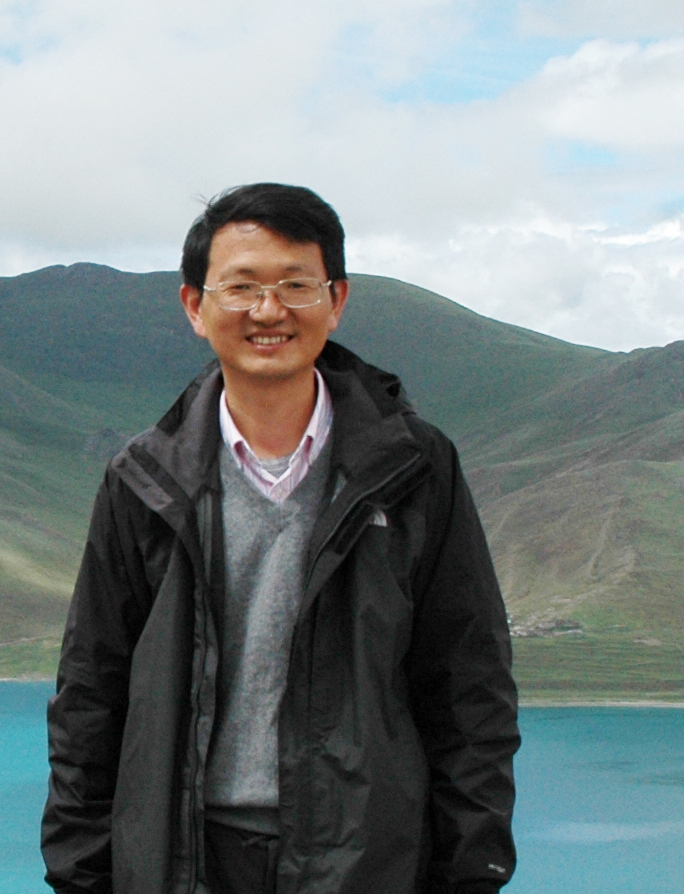Research

| Name: | WANG Hongzhu |
|---|---|
| Academic Title: | Professor |
| Education: | Ph.D. |
| Phone: | 86-27-68780719 |
| E-mail: | wanghz@ihb.ac.cn |
Resume:
Education and Employment
1967 Born in Hubei Province
1986 Graduated from Zhanjiang Fishery College
1986-1989 Worked in Fishery Institute of Hubei Province
1995 D.Sc., Chinese Academy of Sciences
1995- present Assistant Professor to Research Professor in Institute of Hydrobiology, Chinese Academy of Sciences
2000-2001 Guest scientist in Swedish Museum of Natural History
2008 President of Hubei Society of Oceanology & Limnology
Research Experience:
1. Described over 50 new species of Oligochaeta, and one new genus of freshwater Nemertea; revised one genus of marine oligochaetes, Doliodrilus.
2. Established key-time models of submersed macrophytes, abundance models of periphytic gastropods, and optimal-stocking models of Chinese mitten crab in Yangtze lakes, through predictive limnological approach
3. Revealed ecological effects of river-lake isolation, and devised a preliminary strategy to restore Yangtze river-floodplain ecosystem in a holistic way.
4. Found that the limiting factor of phytoplankton is always phosphorus no matter how high TN/TP is, and suggest that eutrophication remediation should focus upon phosphorus abatement, and loosen nitrogen control.
Selected Publications:
1) Wang H. Z., Q. Q. Xu, Y. D. Cui & Y. L. Liang, 2007. Macrozoobenthic community of Poyang Lake, the largest freshwater lake of China, in the Yangtze floodplain. Limnology, 8: 65-71. 2) Liu X. Q. & H. Z. Wang, 2007. Food composition and dietary overlap of macroinvertebrates in a shallow eutrophic lake in China: spatial and temporal variations. Fundamental and Applied Limnology, 168: 71-82.3) Wang H. J., X. M. Liang, P. H. Jiang, J. Wang, S. K. Wu & H. Z. Wang, 2008. TN: TP ratio and planktivorous fish do not affect nutrient-chlorophyll relationships in shallow lakes. Freshwater Biology, 53: 935-944.4) Cui Y. D., X. Q. Liu & H. Z. Wang, 2008. Macrozoobenthic community of Fuxian Lake, the deepest lake of southwest China. Limnologica, 38: 116-125.
5) Liu X. Q. & H. Z. Wang, 2008. Food web of benthic macroinvertebrates in a large Yangtze River-connected lake: the role of flood disturbance. Fundamental and Applied Limnology, 171/4: 297-309.6) Cui Y. D. & H. Z. Wang, 2008. Ecology of macrozoobenthic communities in two plateau lakes of Southwest China. Chinese Journal of Oceanology and Limnology, 26(4): 345-352. 7) Wang H. J. & H. Z. Wang, 2009. Mitigation of lake eutrophication: loosen nitrogen control and focus on phosphorus abatement. Progress in Natural Science, 19 (11): 1145-1451. 8) Pan B. Z., H. J. Wang, X. M. Liang, H. Z. Wang, 2009. Phytoplankton chlorophyll a in the Yangtze-connected lakes: present state, influencing factors and empirical relationships. Fresenius Environmental Bulletin, 18 (10): 1894-1900. 9) Cui, Y. D. & H. Z. Wang. 2009. Three new species of Tubificidae, Oligochaeta, from two plateau lakes in Southwest China. Zootaxa, 2143: 45–54.
10) Liu, X. Q. & H. Z. Wang, 2010. Estimation of minimum area requirement of river-connected lakes for fish diversity conservation in the Yangtze River floodplain. Diversity and Distributions, 16: 932-940.
11) He, X. B., Y. D. Cui & H. Z. Wang, 2010. Limnodrilus simplex sp. nov. (Oligochaeta: Naididae: Tubificinae) from Changjiang River, China. Zoological Science, 27: 768-770.
12) Shu, F. Y., F. K?hler& H. Z. Wang, 2010. On the shell and radular morphology of two endangered species of the genus MargaryaNevill, 1877 (Gastropoda: Viviparidae) from lakes of the Yunnan Plateau, Southwest China. Molluscan Research 30 (1): 17-24. 13) Pan, B.Z., H. J. Wang, X. M. Liang & H. Z. Wang, 2011.Macrozoobenthos in Yangtze floodplain lakes: patterns of density, biomass, and production in relation to river connectivity. Journal of the North American Benthological Society, 30(2): 589-602.14) Zhao, W. H., H. J. Wang, H. Z. Wang & P. G. Close, 2011. Macroinvertebrates in the bed sediment of the Yellow River. International Journal of Sediment Research, 26: 255-268.15) Cui, Y. D. & H. Z. Wang. 2012. Three new species of Potamothrix (Oligochaeta, Naididae, Tubificinae) from Fuxian Lake, the deepest lake of Yunnan Province, Southwest China.Zookeys, 175: 1–17.16) Cui, Y. D. & H. Z. Wang. 2012. Two new species of Potamothrix (Oligochaeta: Tubificinae) from plateau lakes of Yunnan Province, Southwest China.Proceedings of the Biological Society of Washington, 125(1): 12-17.17) Ohtaka A., S.R. Gelder, M. Nishino, M. Ikeda, H. Toyama, Y. D. Cui, X. B. He,H. Z. Wang, R. B. Chen & Z. Y. Wang. 2012. Distributions of two ectosymbionts, branchiobdellidans (Annelida: Clitellata) and scutariellids (Platyhelminthes: “Turbellaria”: Temnocephalida), on atyid shrimp (Arthropoda: Crustacea) in southeast China. Journal of Natural History, 46: 25-26, 1547-1556.18) He, X. B., Y. D. Cui & H. Z. Wang. 2012. Two new species of Tubificinae (Annelida: Clitellata: Naididae) from Tibet, China. Zootaxa. 3458: 159-165.19) Pan, B. Z., H. J. Wang, H. Z. Wang & Z. Y. Wang. 2012. Macrozoobenthic assemblages in relation to environments of the Yangtze-isolated lakes. Frontiers of Environmental Science & Engineering, 6(2): 246-25420) Shu, F. Y., F. K?hler, C. C. Fu and H. Z. Wang. 2013. A new species of Gyraulus (Gastropoda: Planorbidae) from Ancient Lake Lugu, Yunnan-Guizhou Plateau, Southwest China. Molluscan Research, 33(1):34-39.
21) Wang, H. J., H. Z. Wang , X. M. Liang & S. K. Wu , 2014. Total phosphorus thresholds for regime shifts are nearly equal in subtropical and temperate shallow lakes with moderate depths and areas. Freshwater Biology22) Zhang, X. K., Liu, X. Q. and Wang, H. Z., 2014. Developing water level regulation strategies for macrophytes restoration of a large river-disconnected lake, China. Ecological Engineering.